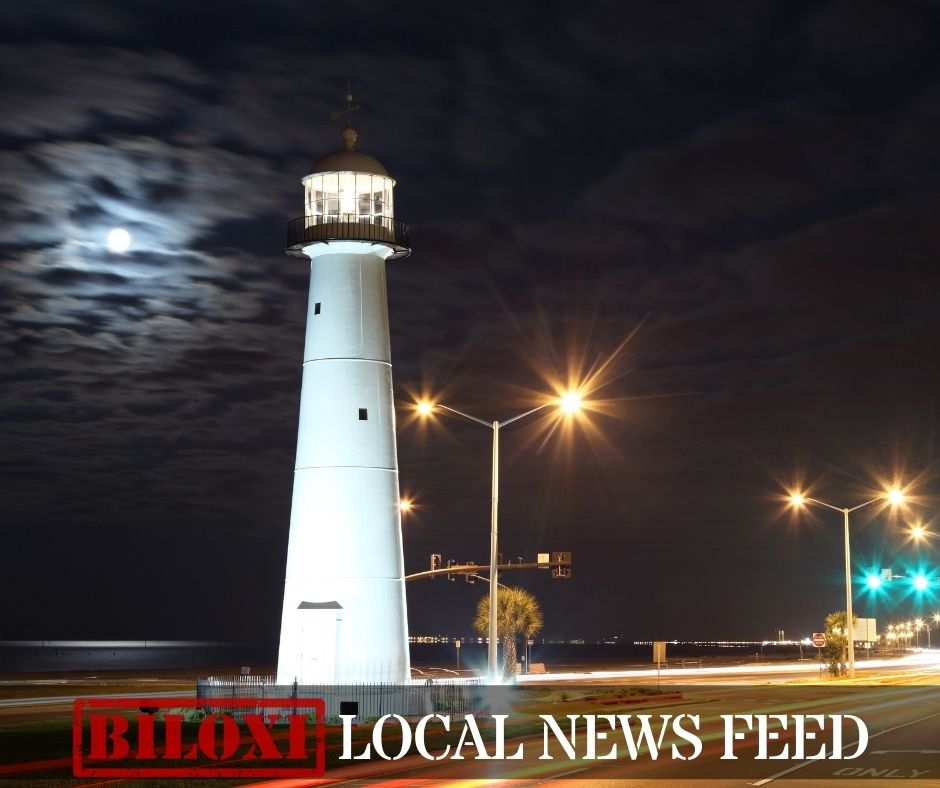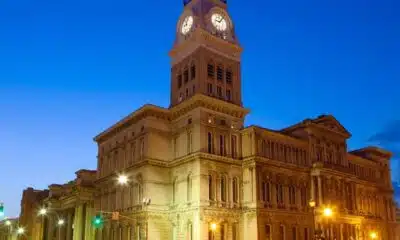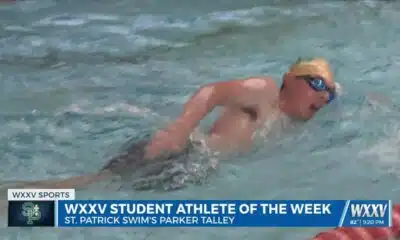Mississippi Today
Katrina-era regulations dash hopes of reclaiming Pascagoula homes
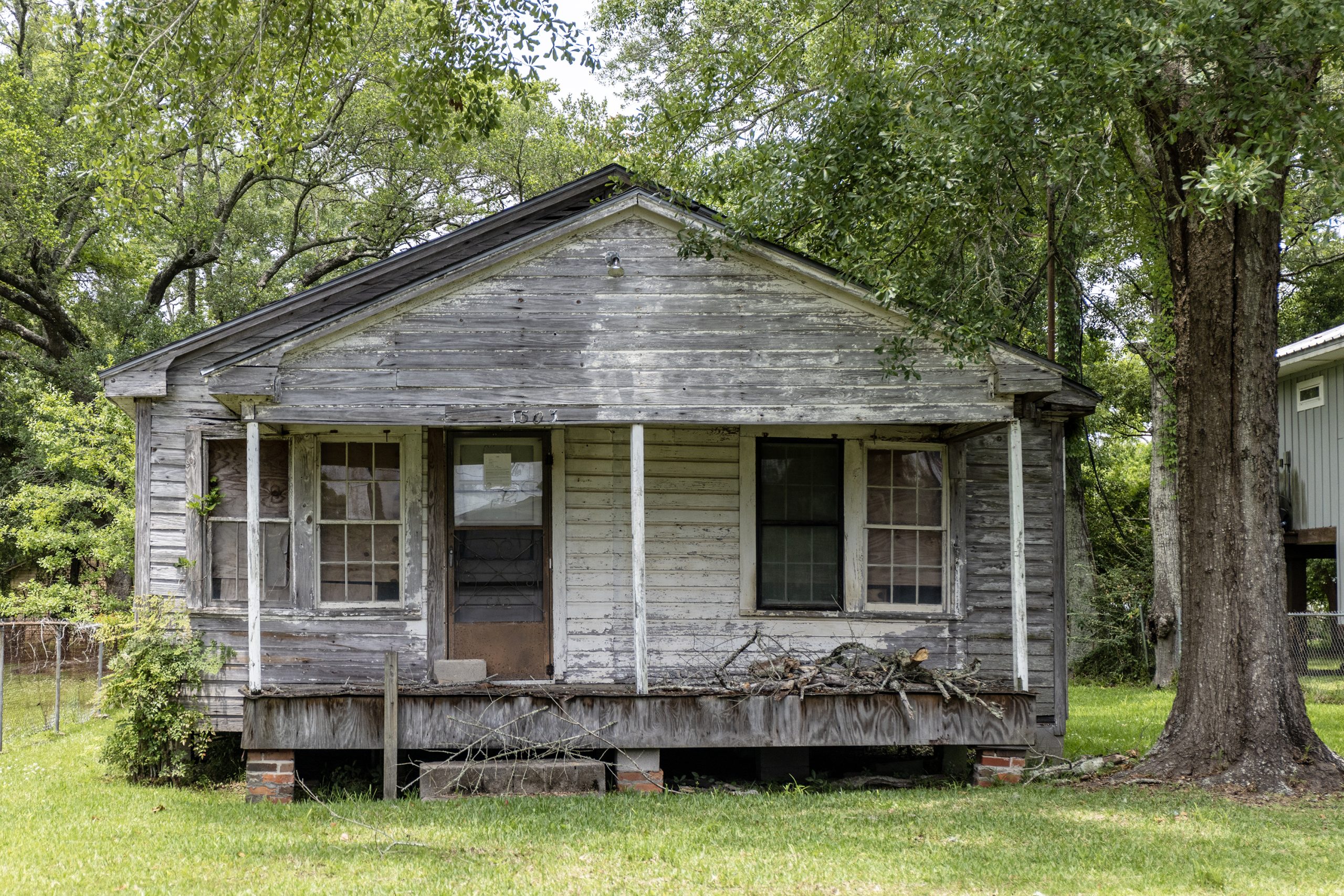
PASCAGOULA — Massive tree branches stretch overhead, shading the small brick house decades past its prime.
Rundown with a rotting carport, it shows every bit of the some 100 years it’s spent on its patch of Midway Avenue. An aged board blocks off the front door. Shutters are missing; windows busted. The inside is an 897-square-foot shell.
The walls are solid brick; the house sits on a concrete slab. Through the overgrown weeds and algae-seeped walls of the screened-in porch, Rony Hernandez saw his family’s dream home. He grew up doing construction with his father. He was confident he could handle the renovation.
But those dreams came to a halt during Hernandez’s first trip to the city for building permits. The Ingalls Shipbuilding employee wanted to live where he worked — but fixing up the old home is going to take more than sweat equity.
It might take a miracle.

Not because of the home itself, but because of the Hurricane Katrina-era regulations that residents say hang over Pascagoula like a dark cloud. In order for a municipality to take part in the National Flood Insurance Program (NFIP), it has to agree to adopt certain building codes for flood zones recommended by the Federal Emergency Management Agency. That’s where the “50% rule” comes into play.
Hernandez’s fixer-upper is valued at just $36,000 and sits about 2 feet below the Pascagoula’s base flood level. Under the current building code, the city can only permit Hernandez half the home’s value in repairs over a 10-year period.
That leaves just $18,000 for a complete makeover, labor costs included. More than 90% of the city is in a flood zone, beholden to the same set of rules. Before the flood maps were redone in 2009, only about 15% of the city was in designated flood zones.
“We are in a situation with the city that we cannot issue permits for those people needing and wanting to do improvements over 50%,” said Pascagoula Mayor Jay Willis. “So, in many cases, we are condemning these properties, and they are in the process of being demolished when, if this rule didn’t exist, they could very well be brought back into code.”
Nearby cities on the Gulf Coast have had an explosive housing market with skyrocketing property values and a surge in new builds. Even as investments in Pascagoula’s downtown mean new apartments, and a $6.8 million hotel, much of the city’s residential neighborhoods are lagging well behind the surrounding cities.
FEMA officials explained that the NFIP rules about making improvements, which Congress enacted decades ago, are meant to deter over-investing in properties that are vulnerable to flooding.
“We, as public servants – FEMA, the state and local officials, owe it to the residents and businesses to work together to take actions that will help keep us safer,” FEMA spokesperson Crystal Paulk-Buchanan said in a written response to Mississippi Today. “When communities adopt and enforce floodplain management regulations that include strong building codes, disaster impacts are less severe, and recovery is faster.”
But to those in Pascagoula, it feels like they got slammed twice. First from Katrina, and then with building permit regulations that have crippled the city from making a meaningful comeback over the last decade.
“We’ve got more going on in construction and development in this town than we’ve had in 30 years,” said Josh Church, the city’s planning and building director. “But it has been a battle from day one.”
The only way Pascagoula’s homeowners in the city’s flood zones can spend more than 50% of a home’s value on renovations is if they elevate the structure above the base flood level. But many older homes are attached to concrete slabs, making them much more expensive to raise.
Raising an existing house is costly, as is building a new house higher up.
As a result, Pascagoula neighborhoods sit as a stark divide between the have and have-nots: New luxury homes high on stilts and old homes falling deeper and deeper into disrepair until the city has no choice but to declare them condemned.
And more and more, the working class — people like Hernandez — say they’re being squeezed out of affording a safe place to live that can help build wealth for their families. Hernandez saved up to redo an old home, but he doesn’t have the income to build a new one from scratch.
The abandoned homes and overgrown lots that litter Pascagoula are a constant reminder of how much Katrina changed the trajectory of a city known for its major economic contributions to the state. It is home to Chevron, an oil refinery, and Ingalls Shipbuilding, which employs more than 11,000 people.

Every weekday the city’s population of 20,000 doubles to 40,000 when workers commute in, but shrinks back down once they clock out, according to estimates from the mayor’s office.
Hernandez, 32, wants to live in Pascagoula, but he and most of his coworkers are spread out across nearby cities such as Moss Point and Ocean Springs or out of state in Alabama — their paychecks, made in Pascagoula, rarely circulate much in the city’s economy. They can’t find homes available in Pascagoula: they’re typically run down or elevated seaside mansions.
“I feel like part of the community already and, as part of the community, I see what’s going on, I see how these types of regulations hurt the community,” Hernandez said in front of the old house on Midway. “Because, look, we got a vacant house over here. Hopefully, hopefully, I will be able to fix it. But a lot of people they’re not even trying. They buy properties, they can’t fix them. And then they become trash.”
On the first Tuesday of every month, Church, the building director, gives a short presentation before Pascagoula’s city council, pinpointing nuisance properties.
He and his team of code enforcement agents have a list of about 150 properties they’ve flagged as derelict or dangerous. Property by property, they work through the list by calling the owners, sending warning letters and posting notices. Going before the city or to court is the last-ditch effort to clean up the city.
Property owners have a chance to speak at a public hearing before the board votes on whether the property should be torn down.
Most don’t show. The ones who do are regularly facing an unfortunate reality: Their properties are too far gone to fix, especially with the 50% rule looming overhead.
The problem properties range from overgrown vacant lots where houses were long ago torn down to abandoned retail spots to dozens of dilapidated houses that have been empty for years, many since 2005, when Katrina flooded the city.
“If they don’t live here 75 to 80% of them don’t care,” Church said. “You can send them letters all you want. It’s just like talking to that wall. They don’t see it, they don’t care about it.”
The nuisance property problem isn’t a coast-wide problem. It’s a Pascagoula problem that most agree traces back to Katrina’s damages, the regulations that followed, and increasing flood insurance costs that make it more and more difficult to justify investing in existing structures.
Some of the properties were passed down to relatives after a death. Many wind up in the hands of out-of-state owners who wanted to turn a quick buck after winning a tax lien certificate in an auction with the city but don’t bother investing in the parcel or old home’s upkeep.
Once the nuisance properties are gone, city leaders hope it will attract more new builds.
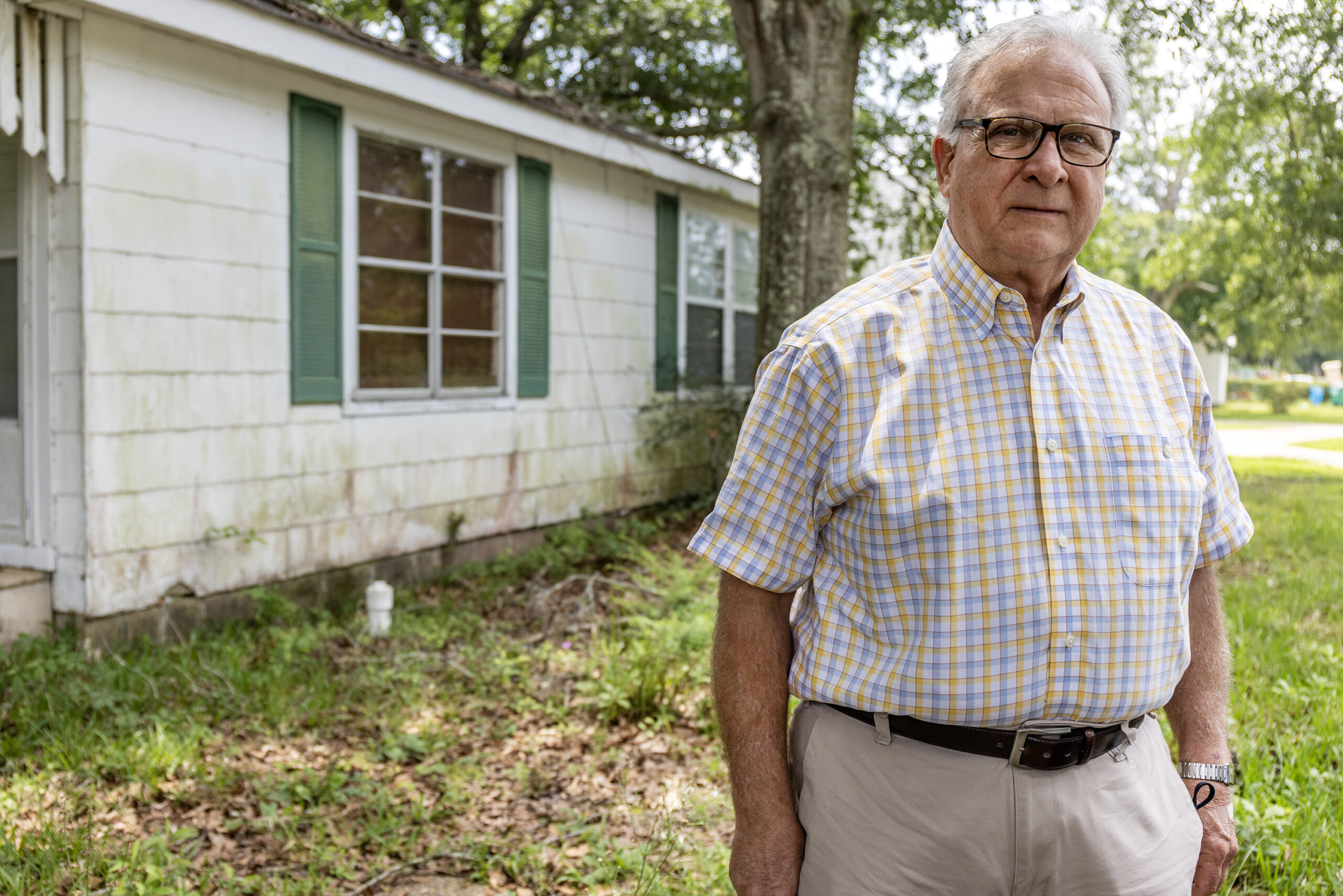
“We have people coming in that are recognizing the great things that are happening in Pascagoula and wanting to be part of it,” said Willis, the Pascagoula mayor. “The next step of that is to get into the residential housing area, and have some of these investors building houses here, and hopefully that’s where we’re going.”
In the interim, there is some risk: Once a house — even a derelict house — is gone, the property taxes may go from $1,000 a year down to $30. It’s an immediate impact on the city’s tax base.
Meanwhile, builders and investors are struggling to turn the profits needed to justify Pascagoula builds in residential neighborhoods.
Brandi and Brandon Busby scurried around a brand-new three bedroom home they built from the ground up in Pascagoula, checking items off their “to do’s” before handing the keys over to the house’s new owner.
The Busbys just built Pascagoula’s first new housing development since 2001. Six homes total.
“We had planned to build 11,” Brandi said, leaning over the kitchen’s glossy marble counters. “But we had to stop. The problem with construction in Pascagoula versus, say, Ocean Springs, is we are paying $26,000 more here to raise the house up, and it eats our profit margin.”
The Busbys bought a parcel of land on Mantou Street that once held three dilapidated homes the couple described as shacks. The land was slightly higher than in much of the rest of the city, so while the homes needed to be raised some to meet the regulations of new construction, they’re not towering over the neighborhood.
The homes are elevated on brick foundation, with stairs leading to a porch. They have sleek siding in neutral colors. The ceilings are high and the kitchen and living areas are bright and open.
With the cost of building materials, the Busbys said it’s impossible to build a new home for under $200,000 and turn a profit. Add in the extra costs of elevating in Pascagoula and high homeowners’ and flood insurance rates, it’s easy to quickly be priced out.
“There’s no in between anymore,” Brandi said, referring to Pascagoula’s makeup. “It’s either 800-square-foot little Navy houses (built during World War II) or a mansion on Washington Avenue.”
The Busbys have a history of turning down Pascagoula remodel requests. In the city’s flood zones, new construction needs to be elevated — even if it’s a room addition on a lower-lying home.
They wanted to improve Pascagoula but had to stop short of their goal. The costs just didn’t make sense. Pascagoula houses already sit on the market longer than in competing coast cities. Not only are they more expensive to build, but also the flood zones in the county’s lowest lying areas make them less valuable to sell. One misstep could mean losing money on a build.
“At the end of the day, we’re a business,” Brandi said, “and we have to keep food on our own table.”
Brandon, Brandi’s husband, worries about Pascaogula’s long-term future — beyond just the 50% rule that keeps him from even attempting to flip the city’s older homes.

Homeowner insurance is skyrocketing along the state’s coastal cities, with one insurance agent seeing increases of 15-70%. Inflation and the overall risk of natural disasters are all contributing to the growing costs. Flood insurance prices are getting steeper on much of the coast, too.
In 2021, FEMA began using new metrics to determine the costs of the National Flood Insurance Program by assessing a property’s risk, especially its proximity to water.
At first, the rule change only affected new policies. Existing policies didn’t increase until the following year. While some folks may be grandfathered in to lower rates, they will increase each year — usually at 18%.
“The $1,800 you’re paying now won’t stay $1,800,” Brandon said. “People don’t seem to understand the magnitude of that. In three to four years, Pascagoula is going to be a ghost town for that reason.”
Realtor Lazaro Rovira primarily sells homes to Hispanic families who work at Ingalls and Chevron.
“They want to live in Pascagoula,” he said. “It’s convenient because you already have the Hispanic population here, the Hispanic supermarkets and the restaurants.”
But he sees how many of them are opting out of the headache of homeownership in Pascagoula because there’s a shortage of reasonable homes. He also sees potential homeowners running the numbers and opting for properties they think may be a better, long-term investment.
He recalls one recent Pascagoula home he sold for $135,000.
“When you add the flood insurance and everything, her payments were $1,400 a month, which is a lot of money,” he said. “If you’re going to pay that much, you might as well go to newer construction in Ocean Springs. It just makes more sense for a lot of people.”
Rovira applauds the mayor’s office for attacking the nuisance property problem and for standing up against the 50% rule. But he’s worried about what could actually be done.
“We’ve been complaining about this for a long time,” he said of those in real estate. “And this is literally the first administration to actually notice and take action to do something about it … Even for them just to try, really speaks volumes.”
If the 50% rule were to be lifted, or changed, Rovira said “it’s going to open up the floodgates to Pascagoula” renovations.
Like Rovira, resident Bernie O’Sullivan has a soft spot for Pascagoula’s historic properties at risk of being torn down.
She and her husband bought a large Victorian built in the late 1800s for $85,000 in 2017 with plans to flip it. But it wound up costing $50,000 just to raise it 3-and-a-half feet to make the home no longer subject to the 50% rule.
“If we would have done the renovations under the 50% rule, in the next 10 years we couldn’t do anything to fix the house if anything happened,” she said. “A little kitchen fire, anything … (the city) would have shut us down when we asked for more permits.”
She said friends and city workers were skeptical if she could pull off the project. Once the home was finished, she couldn’t let it go. She and her husband moved in.
She knows what she did is the exception. Most people don’t have the means to save an old house the way she did.
“And that’s why so many people in Pascagoula just walk away from their properties,” she said.
Asked about criticism of the 50% rule from Coast locals, FEMA called the policy a compromise: the rule allows investment in flood zones while taking into account the risk of repeated damages.
Officials told to Mississippi Today that they’re working with local and state officials to address concerns.
But Clayton French, the deputy director of the Mississippi Emergency Management Agency, said he understood where Pascagoula homeowners were coming from, saying that those looking to make improvements are “trapped.”
“I think the real answer is Congress needs to relook this again,” French said, explaining what it would take to change the policy. “They probably made some choices, just guessing, years ago, and now they’re seeing the fruits of some of those choices.
Pascagoula is low lying. The Gulf waters near Pascagoula are shallow. That means there’s not a lot of room for it to absorb storm surge. Unlike New Orleans, there isn’t a levy built to control it.
Most Pascagoula locals view Katrina as a 100-year storm. They’re not worried about it happening again.
According to NFIP data, the program saw an average of 51 flood insurance claims from Pascagoula between 1977 and 2004, the year before Katrina. Since Katrina, that number’s dropped to 33 per year.
“When you look at the number of flood claims, it’s not the issue,” said Pascagoula resident Jimmy Fondren, a Republican candidate for the Mississippi House. “The issue is the mapping … People shouldn’t be told by the federal government what they can and can’t do with their own homes.”
Pascagoula leadership is figuring out what next steps could help the city.
It could opt out of FEMA’s flood insurance program altogether to avoid the building requirements it has to impose to be in the program.
Mayor Willis said the city would have to carefully consider making such a move and would only do it if a private insurer was able to step up and back the city in FEMA’s place.
Willis and other local leaders say they’ve spoken to Congress members about altering the FEMA requirements so Pascagoula wouldn’t have to adopt a 50% rule — but maybe a 100% percent rule — that would allow homeowners in the city to at least make improvements up to the full value of what the house is worth.
Republican 4th District U.S. Rep. Mike Ezell said he has “made it a priority to work with other members, especially our neighbors from other Gulf Coast districts, to address these problems and provide much-needed relief to our coastal communities.”
“As a Pascagoula native and a lifelong resident of the Gulf Coast, I’ve witnessed the negative impacts of the 50% rule on Pascagoula, especially on young families who can’t afford to live in my hometown. I’ve also seen how cities and towns across the Gulf Coast struggle because of delays in reimbursements and other FEMA programs.”
If a 100% rule went into effect, Hernandez would have enough room to fix his home and have enough wiggle room should he need to add in other repairs over the next 10 years. Before he knew about the 50% rule, he planned to spend about $20,000 in home improvements.
For now, he’s stuck. He’s struggling to find a contractor willing to come give the estimate he needs to give to the city before the planning office can even consider issuing a building permit.
The longer the house sits, the more likely it could one day end up on the city’s list of homes it has no choice but to condemn and knock down.
Hernandez saw a future in the one-story home. He got it for a low price, but has already spent several thousands of dollars renting dumpsters just to clear our trash from the house’s yard.
He grew up in New Orleans. He understands the risk of living in a low-lying area.
He purchased the house in 2017 with high hopes. It was supposed to become the perfect home for his three kids and his two sisters he’s helping raise.
“We bought it thinking that we were gonna be able to move here,” Hernandez said, looking at the little brick house.
He just wants that to be true.
Mississippi Today Reporter Alex Rozier contributed to this report.
This article first appeared on Mississippi Today and is republished here under a Creative Commons license.
Did you miss our previous article…
https://www.biloxinewsevents.com/?p=247383
Mississippi Today
Mississippi prepares for another execution
The Mississippi Supreme Court has set the execution of a man who kidnapped and murdered a 20-year-old community college student in north Mississippi 30 years ago.
Charles Ray Crawford, 59, is set to be executed Oct. 15 at the Mississippi State Penitentiary at Parchman, after multiple requests by the attorney general’s office.
Eight justices joined the majority opinion to set the execution, concluding that Crawford has exhausted all state and federal legal remedies. Mississippi Supreme Court Justice T. Kenneth Griffis Jr. wrote the Friday opinion. Justice David Sullivan did not participate.
However, Kristy Noble with the Mississippi Office of Capital Post-Conviction Counsel released a statement saying it will file another appeal with the U.S. Supreme Court.
“”Mr. Crawford’s inexperienced trial counsel conceded his guilt to the jury — against Mr.
Crawford’s timely and repeated objections,” Noble said in the statement. “Mr. Crawford told his counsel to pursue a not guilty verdict. Counsel did just the opposite, which is precisely what the U.S. Supreme Court says counsel cannot do,” Noble said in the statement.
“A trial like Mr. Crawford’s – one where counsel concedes guilt over his client’s express wishes – is essentially no trial at all.”
Last fall, Crawford’s attorneys asked the court not to set an execution date because he hadn’t exhausted appeal efforts in federal court to challenge a rape conviction that is not tied to his death sentence. In June, the U.S. Supreme Court declined to take up Crawford’s case.
A similar delay occurred a decade ago, when the AG’s office asked the court to reset Crawford’s execution date, but that was denied because efforts to appeal his unrelated rape conviction were still pending.
After each unsuccessful filing, the attorney general’s office asked the Mississippi Supreme Court to set Crawford’s execution date.
On Friday, the court also denied Crawford’s third petition for post-conviction relief and a request for oral argument. It accepted the state’s motion to dismiss the petition. Seven justices concurred and Justice Leslie King concurred in result only. Again, Justice Sullivan did not participate.
Crawford was convicted and sentenced to death in Lafayette County for the 1993 rape and murder of North Mississippi Community College student Kristy Ray.
Days before he was set to go to trial on separate aggravated assault and rape charges, he kidnapped Ray from her parents’ Tippah County home, leaving ransom notes. Crawford took Ray to an abandoned barn where he stabbed her, and his DNA was found on her, indicating he sexually assaulted her, according to court records.
Crawford told police he had blackouts and only remembered parts of the crime, but not killing Ray. Later he admitted “he must of killed her” and led police to Ray’s body, according to court records.
At his 1994 trial he presented an insanity defense, including that he suffered from psychogenic amnesia – periods of time lapse without memory. Medical experts who provided rebuttal testimony said Crawford didn’t have psychogenic amnesia and didn’t show evidence of bipolar illness.
The last person executed in Mississippi was Richard Jordan in June, previously the state’s oldest and longest serving person on death row.
There are 36 people on death row, according to records from the Mississippi Department of Corrections.
Update 9/15/25: This story has been updated to include a response from the Mississippi Office of Capital Post-Conviction Counsel
This article first appeared on Mississippi Today and is republished here under a Creative Commons Attribution-NoDerivatives 4.0 International License.
The post Mississippi prepares for another execution appeared first on mississippitoday.org
Note: The following A.I. based commentary is not part of the original article, reproduced above, but is offered in the hopes that it will promote greater media literacy and critical thinking, by making any potential bias more visible to the reader –Staff Editor.
Political Bias Rating: Centrist
The article presents a factual and balanced account of the legal proceedings surrounding a scheduled execution in Mississippi. It includes perspectives from both the state’s attorney general’s office and the defense counsel, without using emotionally charged language or advocating for a particular political stance. The focus on legal details and court decisions reflects a neutral, informative approach typical of centrist reporting.
Mississippi Today
Presidents are taking longer to declare major natural disasters. For some, the wait is agonizing
TYLERTOWN — As an ominous storm approached Buddy Anthony’s one-story brick home, he took shelter in his new Ford F-250 pickup parked under a nearby carport.
Seconds later, a tornado tore apart Anthony’s home and damaged the truck while lifting it partly in the air. Anthony emerged unhurt. But he had to replace his vehicle with a used truck that became his home while waiting for President Donald Trump to issue a major disaster declaration so that federal money would be freed for individuals reeling from loss. That took weeks.
“You wake up in the truck and look out the windshield and see nothing. That’s hard. That’s hard to swallow,” Anthony said.
Disaster survivors are having to wait longer to get aid from the federal government, according to a new Associated Press analysis of decades of data. On average, it took less than two weeks for a governor’s request for a presidential disaster declaration to be granted in the 1990s and early 2000s. That rose to about three weeks during the past decade under presidents from both major parties. It’s taking more than a month, on average, during Trump’s current term, the AP found.
The delays mean individuals must wait to receive federal aid for daily living expenses, temporary lodging and home repairs. Delays in disaster declarations also can hamper recovery efforts by local officials uncertain whether they will receive federal reimbursement for cleaning up debris and rebuilding infrastructure. The AP collaborated with Mississippi Today and Mississippi Free Press on the effects of these delays for this report.
“The message that I get in the delay, particularly for the individual assistance, is that the federal government has turned its back on its own people,” said Bob Griffin, dean of the College of Emergency Preparedness, Homeland Security and Cybersecurity at the University at Albany in New York. “It’s a fundamental shift in the position of this country.”
The wait for disaster aid has grown as Trump remakes government
The Federal Emergency Management Agency often consults immediately with communities to coordinate their initial disaster response. But direct payments to individuals, nonprofits and local governments must wait for a major disaster declaration from the president, who first must receive a request from a state, territory or tribe. Major disaster declarations are intended only for the most damaging events that are beyond the resources of states and local governments.
Trump has approved more than two dozen major disaster declarations since taking office in January, with an average wait of almost 34 days after a request. That ranged from a one-day turnaround after July’s deadly flash flooding in Texas to a 67-day wait after a request for aid because of a Michigan ice storm. The average wait is up from a 24-day delay during his first term and is nearly four times as long as the average for former Republican President George H.W. Bush, whose term from 1989-1993 coincided with the implementation of a new federal law setting parameters for disaster determinations.
The delays have grown over time, regardless of the party in power. Former Democratic President Joe Biden, in his last year in office, averaged 26 days to declare major disasters — longer than any year under former Democratic President Barack Obama.
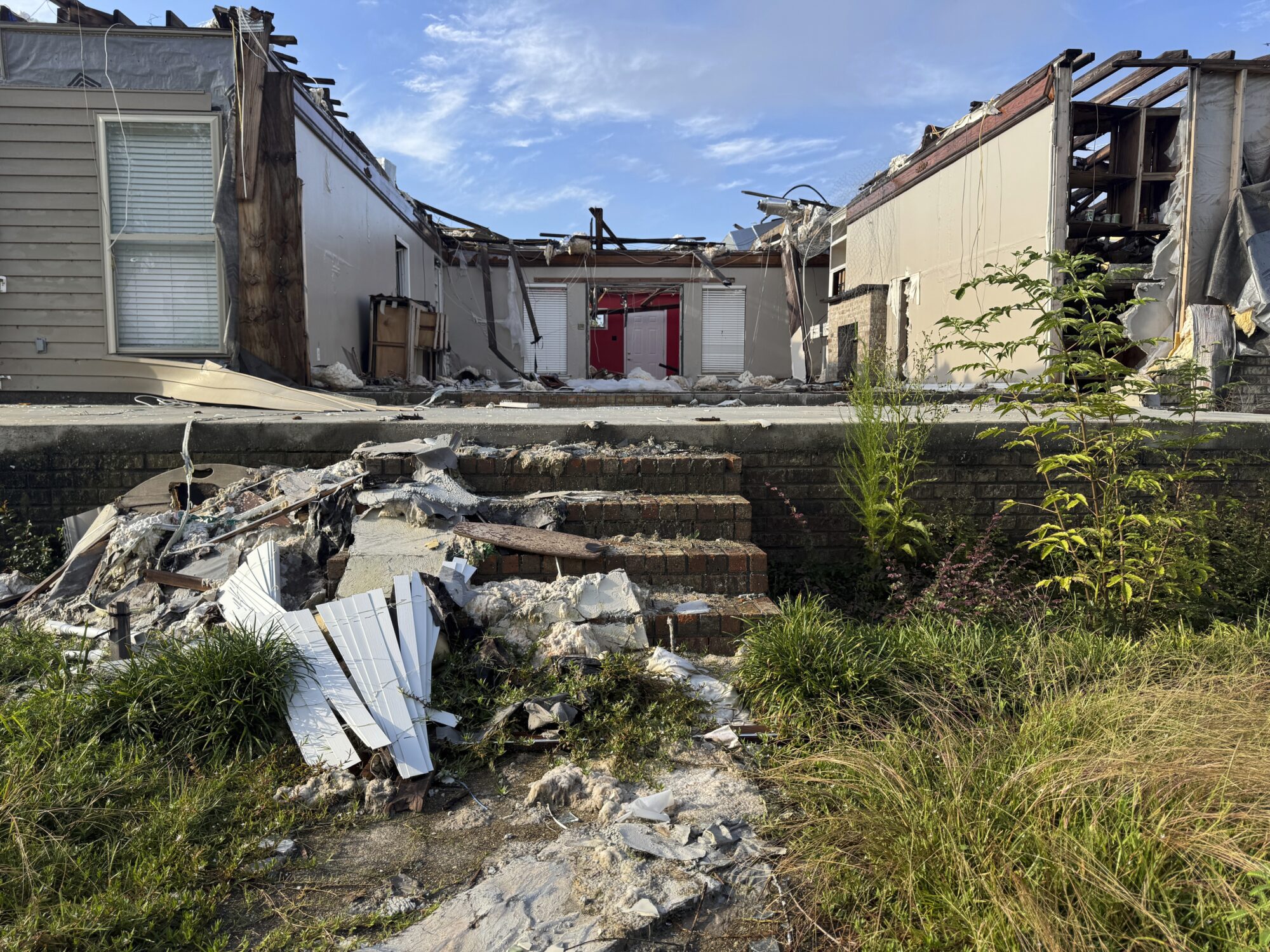
FEMA did not respond to the AP’s questions about what factors are contributing to the trend.
Others familiar with FEMA noted that its process for assessing and documenting natural disasters has become more complex over time. Disasters have also become more frequent and intense because of climate change, which is mostly caused by the burning of fuels such as gas, coal and oil.
The wait for disaster declarations has spiked as Trump’s administration undertakes an ambitious makeover of the federal government that has shed thousands of workers and reexamined the role of FEMA. A recently published letter from current and former FEMA employees warned the cuts could become debilitating if faced with a large-enough disaster. The letter also lamented that the Trump administration has stopped maintaining or removed long-term planning tools focused on extreme weather and disasters.
Shortly after taking office, Trump floated the idea of “getting rid” of FEMA, asserting: “It’s very bureaucratic, and it’s very slow.”
FEMA’s acting chief suggested more recently that states should shoulder more responsibility for disaster recovery, though FEMA thus far has continued to cover three-fourths of the costs of public assistance to local governments, as required under federal law. FEMA pays the full cost of its individual assistance.
Former FEMA Administrator Pete Gaynor, who served during Trump’s first term, said the delay in issuing major disaster declarations likely is related to a renewed focus on making sure the federal government isn’t paying for things state and local governments could handle.
“I think they’re probably giving those requests more scrutiny,” Gaynor said. “And I think it’s probably the right thing to do, because I think the (disaster) declaration process has become the ‘easy button’ for states.”
The Associated Press on Monday received a statement from White House spokeswoman Abigail Jackson in response to a question about why it is taking longer to issue major natural disaster declarations:
“President Trump provides a more thorough review of disaster declaration requests than any Administration has before him. Gone are the days of rubber stamping FEMA recommendations – that’s not a bug, that’s a feature. Under prior Administrations, FEMA’s outsized role created a bloated bureaucracy that disincentivized state investment in their own resilience. President Trump is committed to right-sizing the Federal government while empowering state and local governments by enabling them to better understand, plan for, and ultimately address the needs of their citizens. The Trump Administration has expeditiously provided assistance to disasters while ensuring taxpayer dollars are spent wisely to supplement state actions, not replace them.”
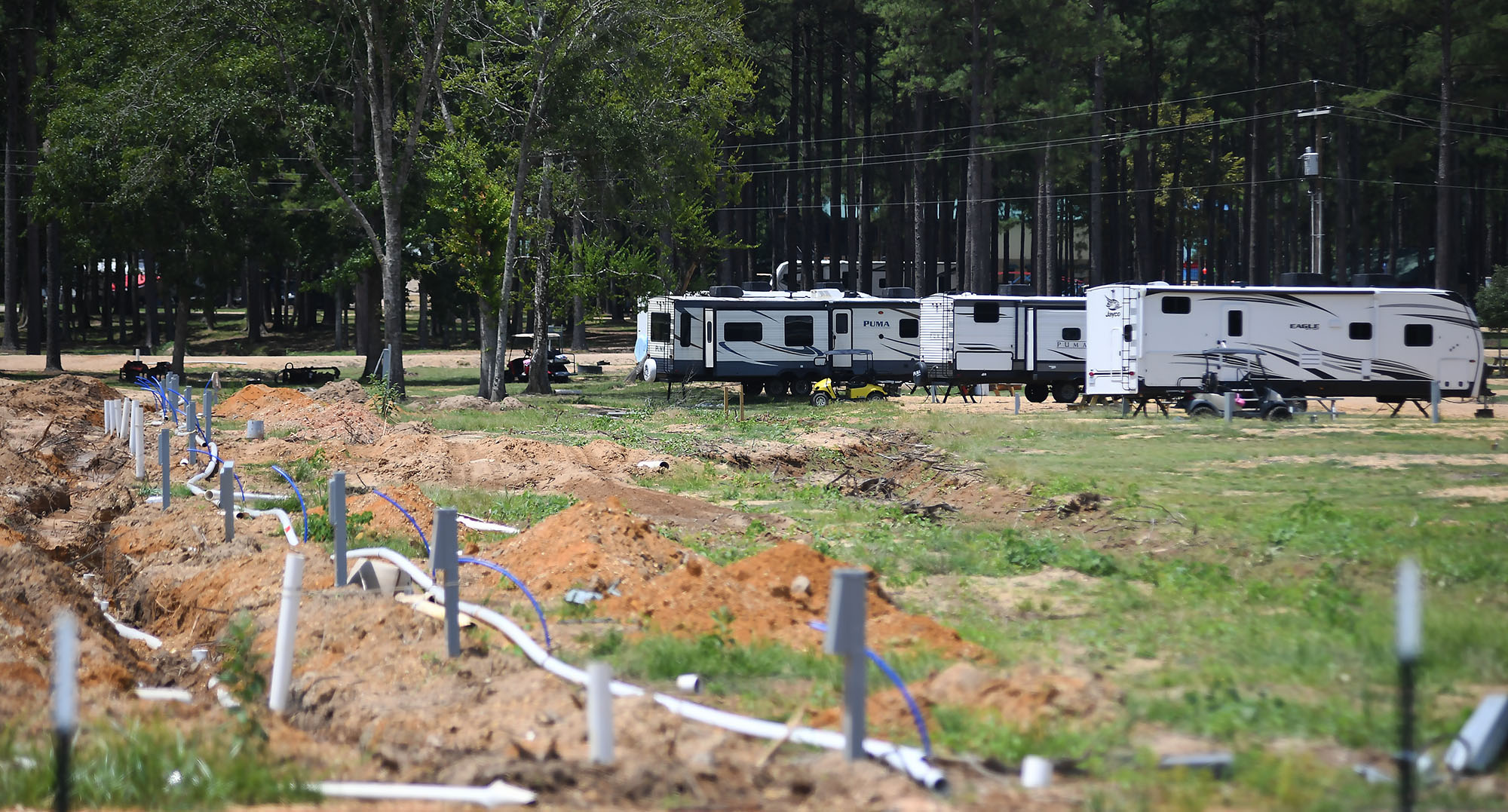
In Mississippi, frustration festered during wait for aid
The tornado that struck Anthony’s home in rural Tylertown on March 15 packed winds up to 140 mph. It was part of a powerful system that wrecked homes, businesses and lives across multiple states.
Mississippi’s governor requested a federal disaster declaration on April 1. Trump granted that request 50 days later, on May 21, while approving aid for both individuals and public entities.
On that same day, Trump also approved eight other major disaster declarations for storms, floods or fires in seven other states. In most cases, more than a month had passed since the request and about two months since the date of those disasters.
If a presidential declaration and federal money had come sooner, Anthony said he wouldn’t have needed to spend weeks sleeping in a truck before he could afford to rent the trailer where he is now living. His house was uninsured, Anthony said, and FEMA eventually gave him $30,000.
In nearby Jayess in Lawrence County, Dana Grimes had insurance but not enough to cover the full value of her damaged home. After the eventual federal declaration, Grimes said FEMA provided about $750 for emergency expenses, but she is now waiting for the agency to determine whether she can receive more.

“We couldn’t figure out why the president took so long to help people in this country,” Grimes said. “I just want to tie up strings and move on. But FEMA — I’m still fooling with FEMA.”
Jonathan Young said he gave up on applying for FEMA aid after the Tylertown tornado killed his 7-year-old son and destroyed their home. The process seemed too difficult, and federal officials wanted paperwork he didn’t have, Young said. He made ends meet by working for those cleaning up from the storm.
“It’s a therapy for me,” Young said, “to pick up the debris that took my son away from me.”
Historically, presidential disaster declarations containing individual assistance have been approved more quickly than those providing assistance only to public entities, according to the AP’s analysis. That remains the case under Trump, though declarations for both types are taking longer.
About half the major disaster declarations approved by Trump this year have included individual assistance.
Some people whose homes are damaged turn to shelters hosted by churches or local nonprofit organizations in the initial chaotic days after a disaster. Others stay with friends or family or go to a hotel, if they can afford it.
But some insist on staying in damaged homes, even if they are unsafe, said Chris Smith, who administered FEMA’s individual assistance division under three presidents from 2015-2022. If homes aren’t repaired properly, mold can grow, compounding the recovery challenges.
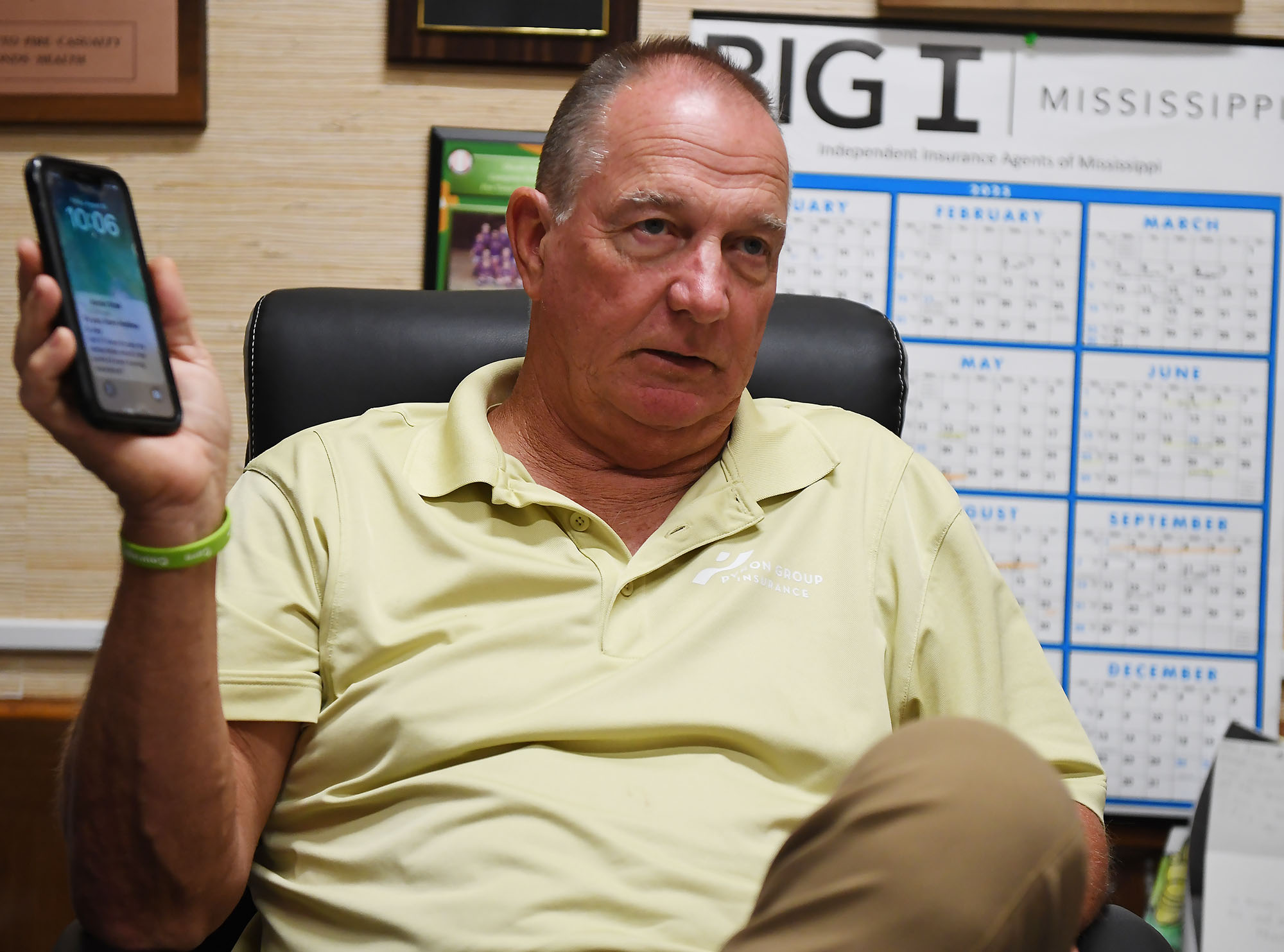
That’s why it’s critical for FEMA’s individual assistance to get approved quickly — ideally, within two weeks of a disaster, said Smith, who’s now a disaster consultant for governments and companies.
“You want to keep the people where they are living. You want to ensure those communities are going to continue to be viable and recover,” Smith said. “And the earlier that individual assistance can be delivered … the earlier recovery can start.”
In the periods waiting for declarations, the pressure falls on local officials and volunteers to care for victims and distribute supplies.
In Walthall County, where Tylertown is, insurance agent Les Lampton remembered watching the weather news as the first tornado missed his house by just an eighth of a mile. Lampton, who moonlights as a volunteer firefighter, navigated the collapsed trees in his yard and jumped into action. About 45 minutes later, the second tornado hit just a mile away.
“It was just chaos from there on out,” Lampton said.
Walthall County, with a population of about 14,000, hasn’t had a working tornado siren in about 30 years, Lampton said. He added there isn’t a public safe room in the area, although a lot of residents have ones in their home.
Rural areas with limited resources are hit hard by delays in receiving funds through FEMA’s public assistance program, which, unlike individual assistance, only reimburses local entities after their bills are paid. Long waits can stoke uncertainty and lead cost-conscious local officials to pause or scale-back their recovery efforts.

In Walthall County, officials initially spent about $700,000 cleaning up debris, then suspended the cleanup for more than a month because they couldn’t afford to spend more without assurance they would receive federal reimbursement, said county emergency manager Royce McKee. Meanwhile, rubble from splintered trees and shattered homes remained piled along the roadside, creating unsafe obstacles for motorists and habitat for snakes and rodents.
When it received the federal declaration, Walthall County took out a multimillion-dollar loan to pay contractors to resume the cleanup.
“We’re going to pay interest and pay that money back until FEMA pays us,” said Byran Martin, an elected county supervisor. “We’re hopeful that we’ll get some money by the first of the year, but people are telling us that it could be [longer].”
Lampton, who took after his father when he joined the volunteer firefighters 40 years ago, lauded the support of outside groups such as Cajun Navy, Eight Days of Hope, Samaritan’s Purse and others. That’s not to mention the neighbors who brought their own skid steers and power saws to help clear trees and other debris, he added.
“That’s the only thing that got us through this storm, neighbors helping neighbors,” Lampton said. “If we waited on the government, we were going to be in bad shape.”
Lieb reported from Jefferson City, Missouri, and Wildeman from Hartford, Connecticut.
Update 98/25: This story has been updated to include a White House statement released after publication.
This article first appeared on Mississippi Today and is republished here under a Creative Commons Attribution-NoDerivatives 4.0 International License.
The post Presidents are taking longer to declare major natural disasters. For some, the wait is agonizing appeared first on mississippitoday.org
Note: The following A.I. based commentary is not part of the original article, reproduced above, but is offered in the hopes that it will promote greater media literacy and critical thinking, by making any potential bias more visible to the reader –Staff Editor.
Political Bias Rating: Center-Left
This article presents a critical view of the Trump administration’s handling of disaster declarations, highlighting delays and their negative impacts on affected individuals and communities. It emphasizes concerns about government downsizing and reduced federal support, themes often associated with center-left perspectives that favor robust government intervention and social safety nets. However, it also includes statements from Trump administration officials defending their approach, providing some balance. Overall, the tone and framing lean slightly left of center without being overtly partisan.
Mississippi Today
Northeast Mississippi speaker and worm farmer played key role in Coast recovery after Hurricane Katrina
The 20th anniversary of Hurricane Katrina slamming the Mississippi Gulf Coast has come and gone, rightfully garnering considerable media attention.
But still undercovered in the 20th anniversary saga of the storm that made landfall on Aug. 29, 2005, and caused unprecedented destruction is the role that a worm farmer from northeast Mississippi played in helping to revitalize the Coast.
House Speaker Billy McCoy, who died in 2019, was a worm farmer from the Prentiss, not Alcorn County, side of Rienzi — about as far away from the Gulf Coast as one could be in Mississippi.
McCoy grew other crops, but a staple of his operations was worm farming.
Early after the storm, the House speaker made a point of touring the Coast and visiting as many of the House members who lived on the Coast as he could to check on them.
But it was his action in the forum he loved the most — the Mississippi House — that is credited with being key to the Coast’s recovery.
Gov. Haley Barbour had called a special session about a month after the storm to take up multiple issues related to Katrina and the Gulf Coast’s survival and revitalization. The issue that received the most attention was Barbour’s proposal to remove the requirement that the casinos on the Coast be floating in the Mississippi Sound.
Katrina wreaked havoc on the floating casinos, and many operators said they would not rebuild if their casinos had to be in the Gulf waters. That was a crucial issue since the casinos were a major economic engine on the Coast, employing an estimated 30,000 in direct and indirect jobs.
It is difficult to fathom now the controversy surrounding Barbour’s proposal to allow the casinos to locate on land next to the water. Mississippi’s casino industry that was birthed with the early 1990s legislation was still new and controversial.
Various religious groups and others had continued to fight and oppose the casino industry and had made opposition to the expansion of gambling a priority.
Opposition to casinos and expansion of casinos was believed to be especially strong in rural areas, like those found in McCoy’s beloved northeast Mississippi. It was many of those rural areas that were the homes to rural white Democrats — now all but extinct in the Legislature but at the time still a force in the House.
So, voting in favor of casino expansion had the potential of being costly for what was McCoy’s base of power: the rural white Democrats.
Couple that with the fact that the Democratic-controlled House had been at odds with the Republican Barbour on multiple issues ranging from education funding to health care since Barbour was inaugurated in January 2004.
Barbour set records for the number of special sessions called by the governor. Those special sessions often were called to try to force the Democratic-controlled House to pass legislation it killed during the regular session.
The September 2005 special session was Barbour’s fifth of the year. For context, current Gov. Tate Reeves has called four in his nearly six years as governor.
There was little reason to expect McCoy to do Barbour’s bidding and lead the effort in the Legislature to pass his most controversial proposal: expanding casino gambling.
But when Barbour ally Lt. Gov. Amy Tuck, who presided over the Senate, refused to take up the controversial bill, Barbour was forced to turn to McCoy.
The former governor wrote about the circumstances in an essay he penned on the 20th anniversary of Hurricane Katrina for Mississippi Today Ideas.
“The Senate leadership, all Republicans, did not want to go first in passing the onshore casino law,” Barbour wrote. “So, I had to ask Speaker McCoy to allow it to come to the House floor and pass. He realized he should put the Coast and the state’s interests first. He did so, and the bill passed 61-53, with McCoy voting no.
“I will always admire Speaker McCoy, often my nemesis, for his integrity in putting the state first.”
Incidentally, former Rep. Bill Miles of Fulton, also in northeast Mississippi, was tasked by McCoy with counting, not whipping votes, to see if there was enough support in the House to pass the proposal. Not soon before the key vote, Miles said years later, he went to McCoy and told him there were more than enough votes to pass the legislation so he was voting no and broached the idea of the speaker also voting no.
It is likely that McCoy would have voted for the bill if his vote was needed.
Despite his no vote, the Biloxi Sun Herald newspaper ran a large photo of McCoy and hailed the Rienzi worm farmer as a hero for the Mississippi Gulf Coast.
This article first appeared on Mississippi Today and is republished here under a Creative Commons Attribution-NoDerivatives 4.0 International License.
The post Northeast Mississippi speaker and worm farmer played key role in Coast recovery after Hurricane Katrina appeared first on mississippitoday.org
Note: The following A.I. based commentary is not part of the original article, reproduced above, but is offered in the hopes that it will promote greater media literacy and critical thinking, by making any potential bias more visible to the reader –Staff Editor.
Political Bias Rating: Centrist
The article presents a factual and balanced account of the political dynamics surrounding Hurricane Katrina recovery efforts in Mississippi, focusing on bipartisan cooperation between Democratic and Republican leaders. It highlights the complexities of legislative decisions without overtly favoring one party or ideology, reflecting a neutral and informative tone typical of centrist reporting.
-
News from the South - Kentucky News Feed7 days ago
Lexington man accused of carjacking, firing gun during police chase faces federal firearm charge
-
News from the South - Alabama News Feed7 days ago
Zaxby's Player of the Week: Dylan Jackson, Vigor WR
-
News from the South - North Carolina News Feed5 days ago
What we know about Charlie Kirk shooting suspect, how he was caught
-
Local News7 days ago
US stocks inch to more records as inflation slows and Oracle soars
-
Local News6 days ago
Russian drone incursion in Poland prompts NATO leaders to take stock of bigger threats
-
Local News Video6 days ago
Introducing our WXXV Student Athlete of the Week, St. Patrick’s Parker Talley!
-
News from the South - North Carolina News Feed5 days ago
Federal hate crime charge sought in Charlotte stabbing | North Carolina
-
The Center Square6 days ago
Weapon recovered as manhunt continues in Kirk assassination investigation | National















